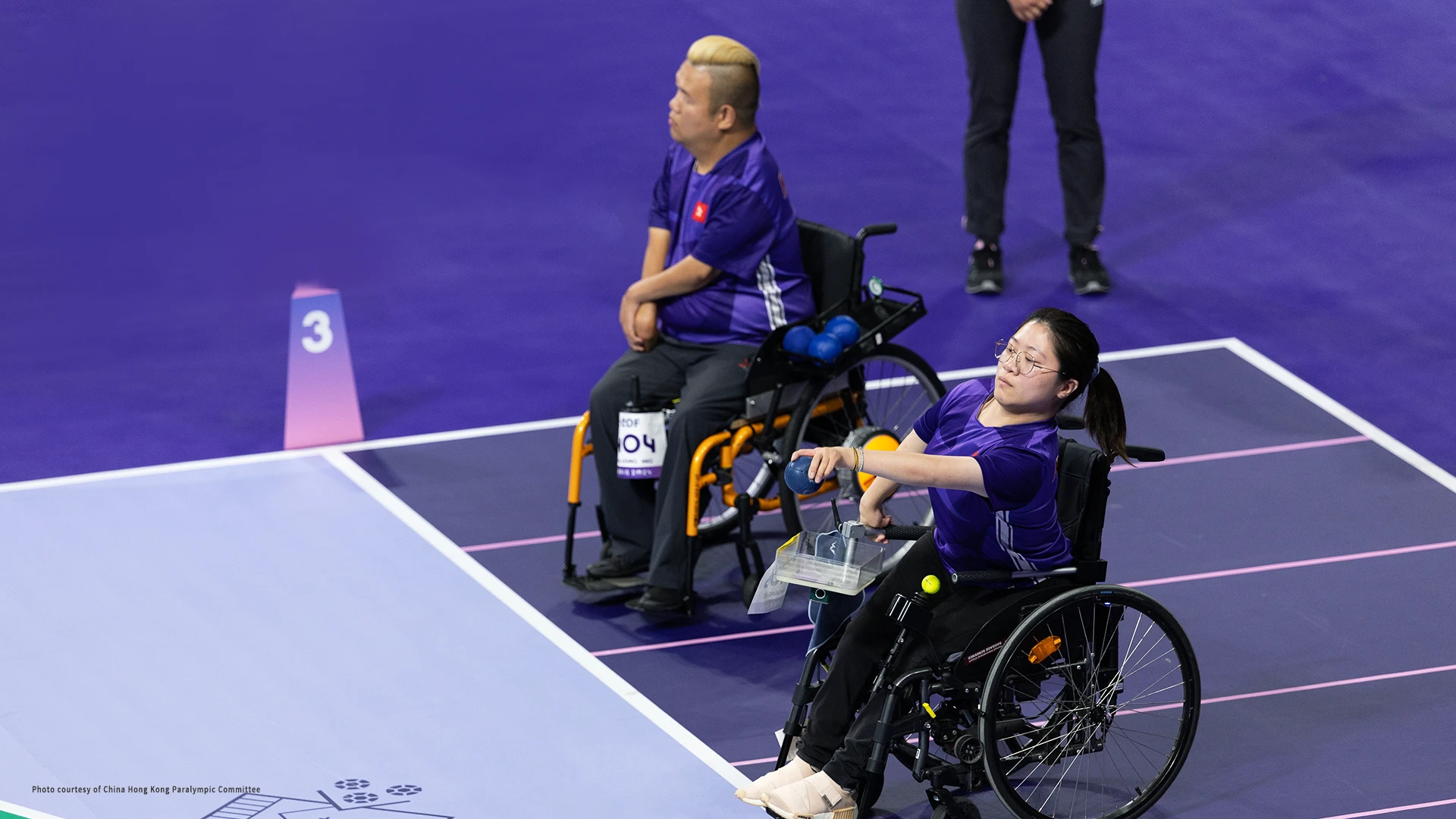Boccia
Competition date: 9-14 December, 2025
Boccia players are categorised into four classes:
BC1: Players propel the ball with their hands or feet and are allowed to have an assistant. The assistant usually sits in a designated area behind the court, ready to stabilise or adjust the player’s wheelchair and pass the ball to the player.
BC2: Players propel the ball with their hands and are not allowed to have an assistant.
BC3: Players roll the ball down a ramp with the help of an assistant. The assistant adjusts the ramp’s inclination and direction according to the player’s instructions. During the match, the assistant must face away from the court and refrain from speaking to the player. The assistant will also be awarded a medal if the player wins.
BC4: Players propel the ball with their hands or feet. Only players using their feet are allowed to have an assistant.
Hong Kong will stage all the above events, and 14 gold medals will be awarded.










